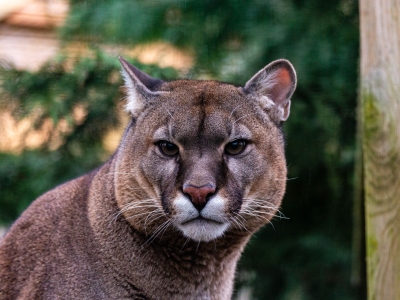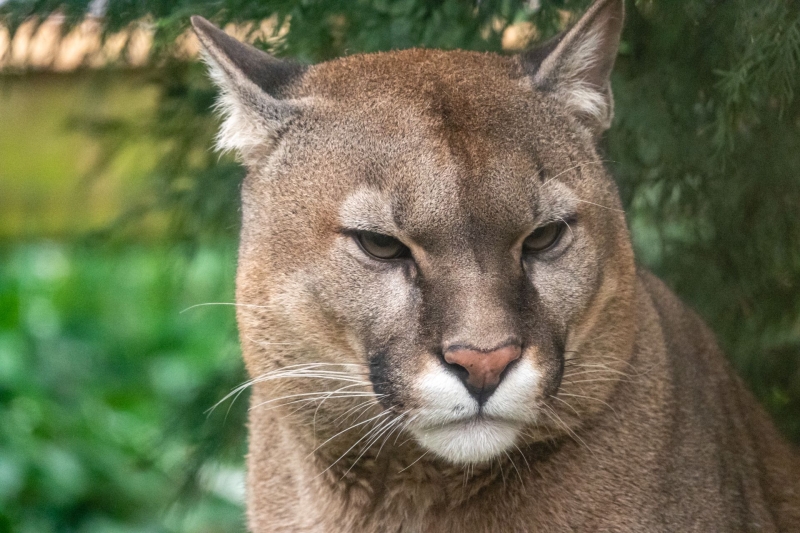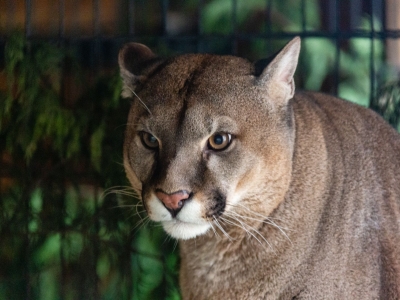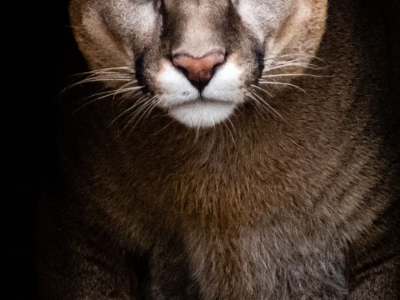Cougar Puma concolor
Animals in our sanctuary
Yukon (Male)

Cougar Yukon comes from a zoo in Lithuania that took very poor care of the cougar. The animal was given too much, and above all the wrong food, as a result of which it is seriously overweight and suffers from liver and kidney problems. His enclosure did not meet current legislation either. Yukon had nowhere to lie protected from the rain or bright sunshine. He was therefore confiscated by the regional authorities. At the moment he is still staying in the Nature Center and is being closely monitored there. We hope to offer him a new, animal worthy home here in the fall.
Appearance:
The puma is a large, muscular feline with a sturdy build. Its coat color varies, ranging from reddish-brown in tropical regions to a more yellowish hue in drier areas. It has powerful legs and a long, thick tail, with hind legs that are longer than the front legs, aiding in its ability to jump. Its ears are small with black markings on the back, and it has a round head with amber-colored eyes.
Behavior:
As a solitary predator, the puma avoids conflict whenever possible. It is an exceptional hunter, using ambush tactics to catch its prey. Thanks to its strength, it can take down animals larger than itself. Pumas can swim but do so only when necessary.
Diet:
The puma’s diet primarily consists of hoofed animals such as deer, but it also preys on smaller animals like rabbits, birds, and occasionally insects or fish. It typically kills its prey with a fatal bite to the neck.
Habitat:
The puma is highly adaptable and inhabits a variety of environments, including dense forests, shrublands, and rocky areas. It has a vast range, spanning from southern Canada to northern Argentina, and can thrive in different climates, from mountainous regions to tropical forests.
Reproduction:
Pumas reach sexual maturity around their second year. After a gestation period of 82-96 days, they typically give birth to 2 to 3 cubs, often in a sheltered location such as a rocky den. The young remain with their mother for up to two years before becoming independent.
Threats:
Pumas have few natural predators, but in Central and South America, they may be threatened by jaguars or anacondas, while in North America, they can face danger from grizzly bears or wolves. The IUCN classifies the species as "Not Threatened."
Adopt this Cougar





